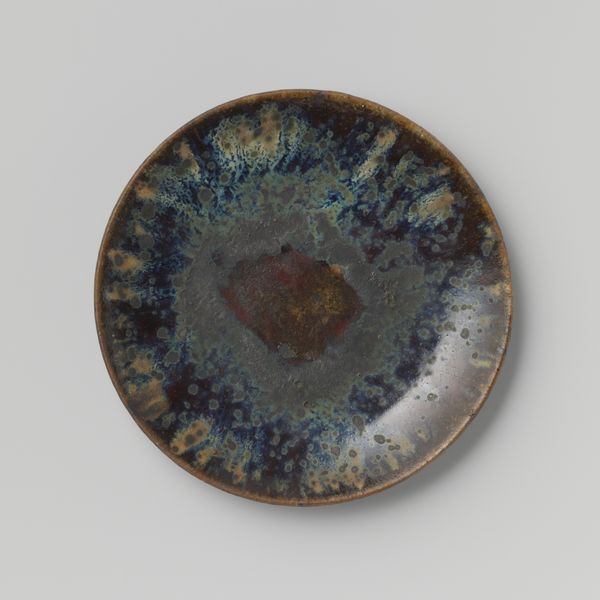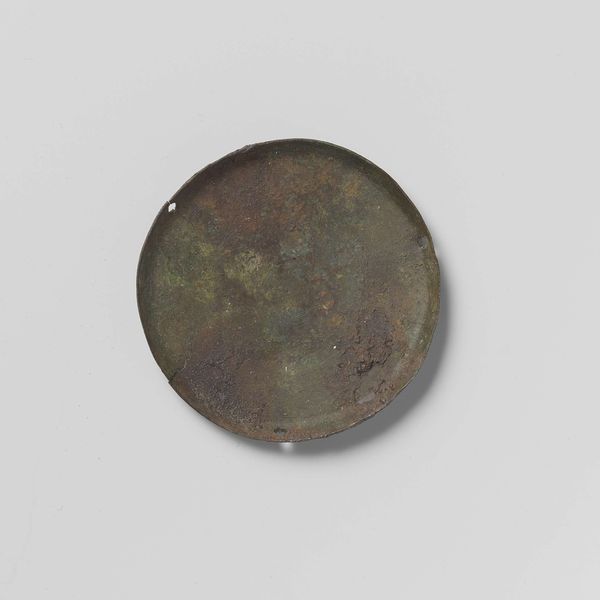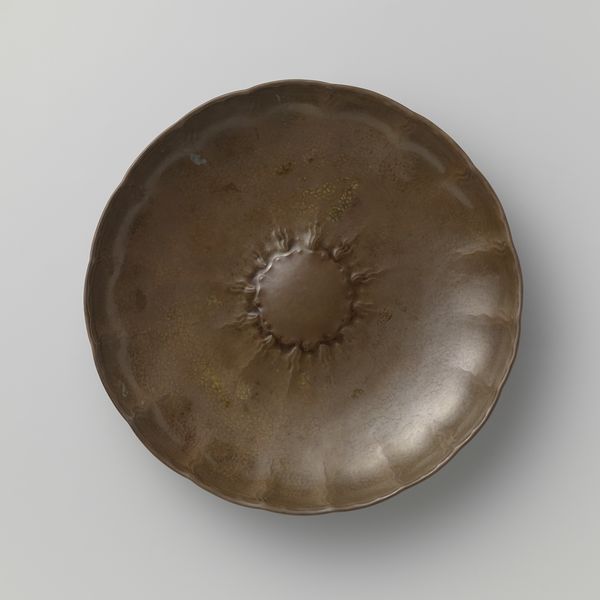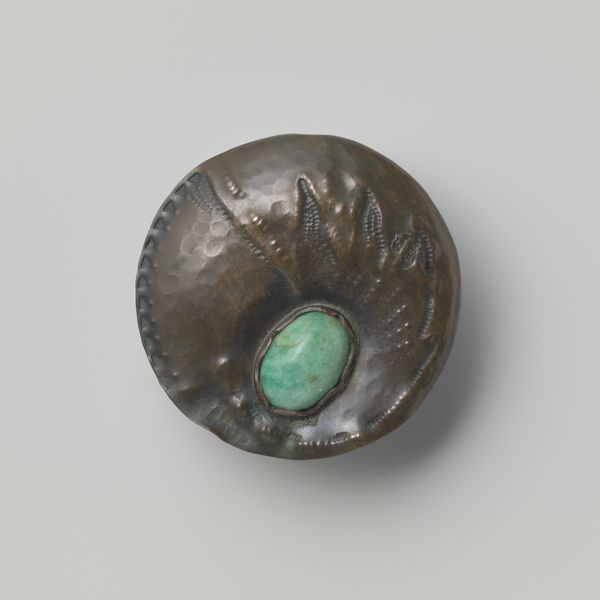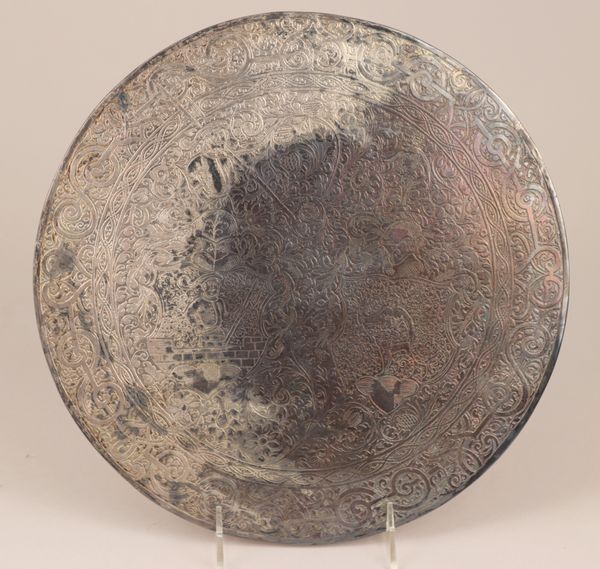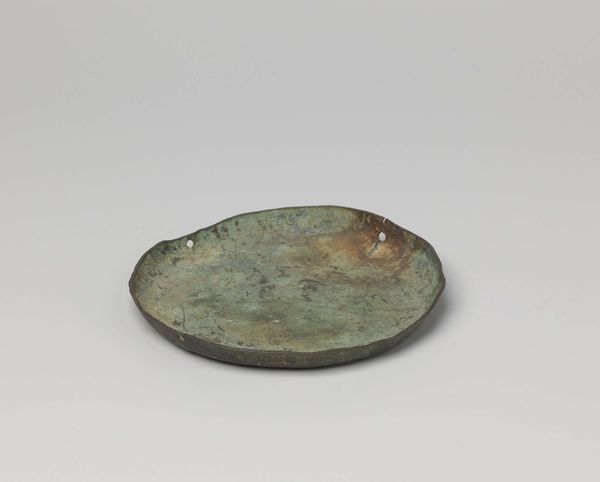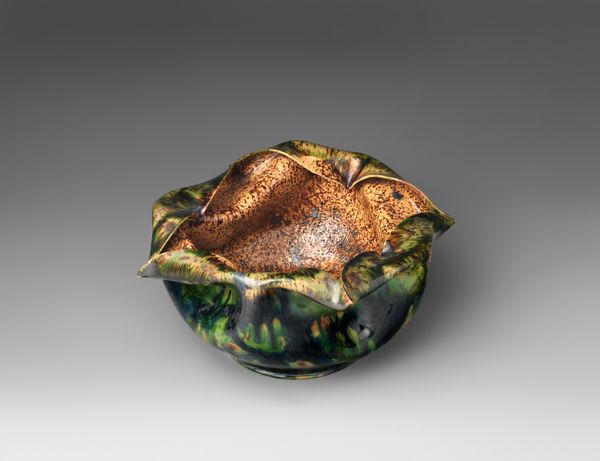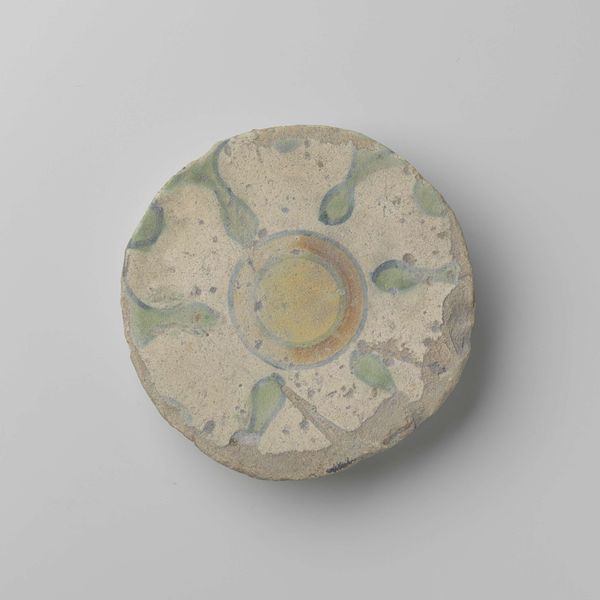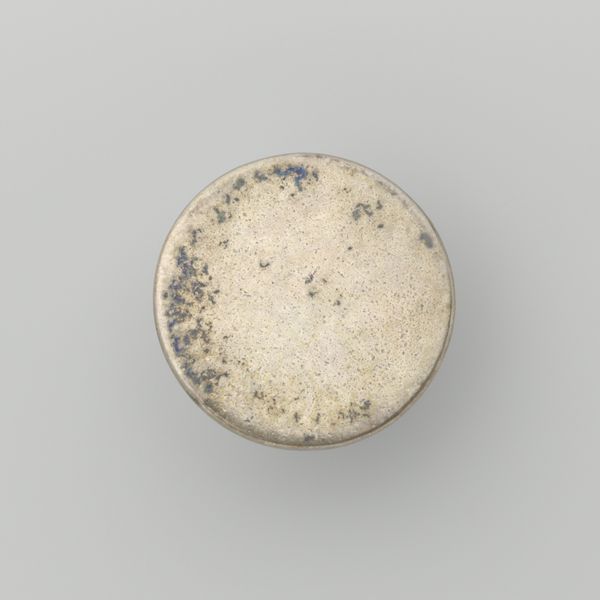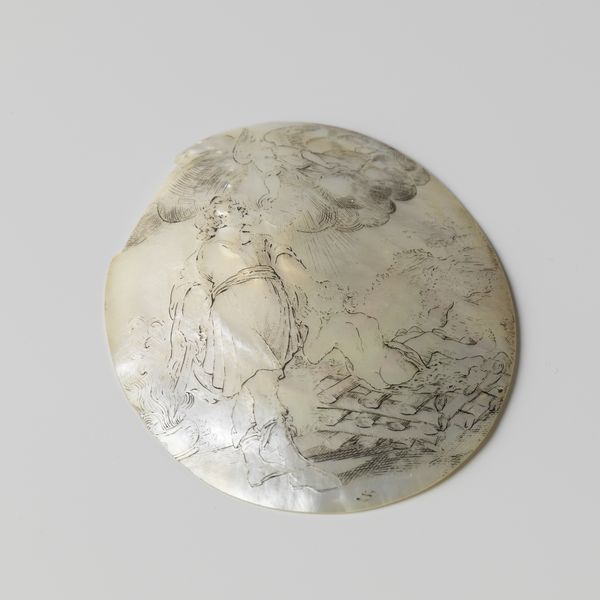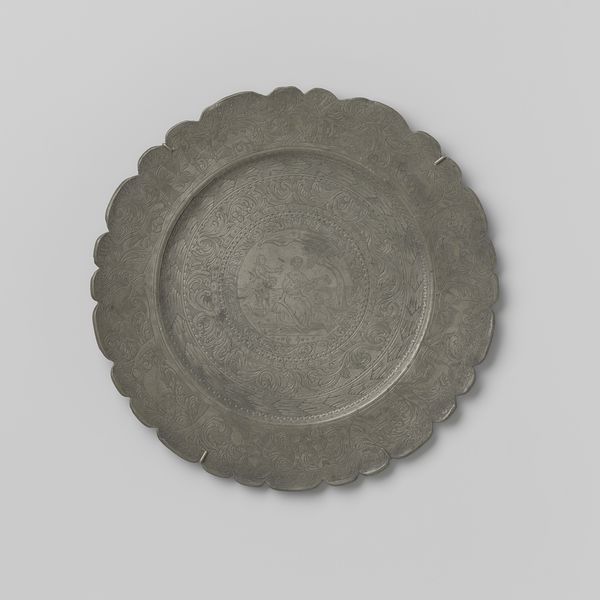
ceramic, earthenware
#
ceramic
#
earthenware
#
stoneware
#
ceramic
Dimensions: height 1.8 cm, diameter 14.0 cm
Copyright: Rijks Museum: Open Domain
Editor: Here we have a striking earthenware saucer, probably dating back to around 1900 and part of a set attributed to Pierre-Adrien Dalpayrat. There's such an incredible depth in the glazing. It makes me think of a cosmic event, a tiny supernova held right here in this simple dish. What leaps out at you about it? Curator: Supernova is spot on! It's like Dalpayrat bottled the Big Bang into this humble saucer. The daring dance of dark blues, molten browns and flashes of fiery yellows – do you see how they seem to writhe and swirl, like colors were caught in a whirlwind? It’s pure alchemy, really. Earth turned into stardust. It's the kind of controlled chaos that speaks of a master at play, don't you think? Editor: Absolutely! It looks incredibly intentional but also, almost like a happy accident, doesn’t it? Was he known for this kind of… spontaneous glazing technique? Curator: Exactly! It *feels* like an accident, and that's the beauty of it! He became rather famous for these experimental glazes. He called it “rouge flammé” which basically translates to "flambé red" -- you see it hinting at the edge. It's so unexpected in ceramic work, but he clearly found a method to the madness. To get that kind of unpredictable color play consistently must have been a challenge! Did you notice that there's even hints of green? Editor: No, I missed the green. I can see that now! Thinking of it like alchemy really opens up a new way to see this piece. Curator: Doesn't it though? It makes you think, what other wonders are hiding in plain sight, just waiting for a little spark of imagination? Editor: Definitely! This was a really fascinating insight, thank you! Curator: The pleasure was all mine. It’s these conversations that keep art alive!
Comments
No comments
Be the first to comment and join the conversation on the ultimate creative platform.
